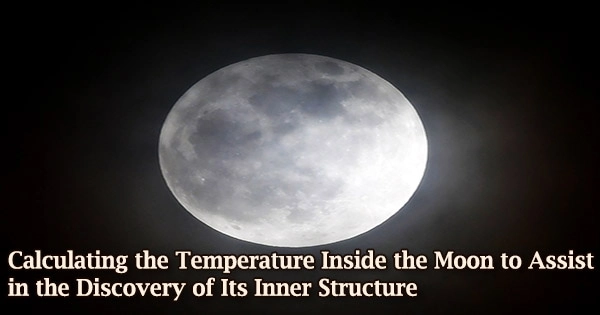Little is known about the Moon’s interior structure, but a University of Rhode Island scientist achieved a significant breakthrough when she conducted studies that allowed her to establish the temperature near the Moon’s core-mantle barrier.
She discovered a temperature range of 1,300 to 1,470 degrees Celsius, which is at the high end of an 800-degree range previously determined by scientists.
“In order to understand the interior structure of the Moon today, we needed to nail down the thermal state better,” said Ananya Mallik, a URI assistant professor of geosciences who joined the University faculty in December 2018.
“Now we have the two anchor points the core-mantle boundary and the surface temperature measured by Apollo and that will help us create a temperature profile through the Moon. We need that temperature profile to determine the internal state, structure, and composition of the Moon.”
The Moon’s surface temperature is around -20 degrees Celsius. According to Mallik, the Moon has an iron core similar to Earth’s, and prior studies using seismic data revealed that between 5 and 30% of the material near the core-mantle barrier was liquid or molten.
In order to understand the interior structure of the Moon today, we needed to nail down the thermal state better. Now we have the two anchor points the core-mantle boundary and the surface temperature measured by Apollo and that will help us create a temperature profile through the Moon. We need that temperature profile to determine the internal state, structure, and composition of the Moon.
Ananya Mallik
“The big question is, why would we have some melt present in the Moon at that depth,” Mallik said.
Mallik used a multi-anvil system that can exert the high pressures found deep into the Moon to undertake a series of experiments in 2016 at the Bavarian Research Institute of Experimental Geochemistry and Geophysics in Germany to begin answering this question.
She used a graphite heater to raise the temperature of the sample until it partially melted, then crushed it in the device at 45,000 times the Earth’s atmospheric pressure, which is the pressure predicted to occur near the Moon’s core-mantle border.
“The goal was to determine what temperature range would produce a 5 to 30 percent melt, which would tell us the temperature range of the core-mantle boundary,” she said.
Scientists can now begin to create a more exact temperature profile of the Moon and proceed to determine a profile of the minerals that make up the mantle from the crust to the core now that the temperature range at the boundary has been minimized.
“It’s important that we know the composition of the Moon to better understand why it has evolved as it has,” Mallik said.
Since the beginning, the Earth’s and Moon’s histories have been connected. Both are the result of a massive collision between proto-Earth and a planet around the size of Mars that occurred over 4.5 billion years ago.
So, in order to better comprehend our planet, we must first learn about our nearest neighbors, because we all came from the same place.
“Earth is complicated,” she continued. “Any similarity in the composition between Earth and the Moon can give us insight into how these two planetary bodies were formed, what were the energetics of the collision, and how elements were partitioned between them.”
Plate tectonics, according to the URI geoscientist, is responsible for the distribution of continents, the topography of Earth’s surface, the regulation of long-term climate, and possibly even the genesis of life. On the Moon, however, there is no indication of plate tectonics.
“Everything on Earth happens because of plate tectonics,” she said. “What does this tell us about our own planet when the Moon doesn’t experience this process? It’s the same argument for why we study Mars and Venus. They are our next closest neighbors, and we all had a common start, but why are they so different from our planet?”
The next phase in Mallik’s research will be to determine the density of the molten material at the core-mantle barrier using experimental methods, which will help to refine the temperature range.
She will next integrate these observations with computer approaches to calculate the temperature profile and composition of the Moon’s interior in partnership with Heidi Fuqua Haviland at NASA’s Marshall Space Flight Center and Paul Bremner at the University of Florida.





